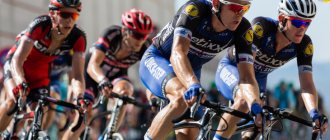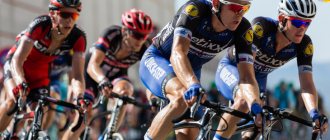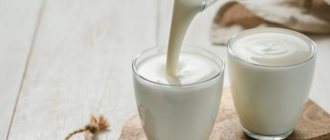The role of glycogen in the body
The ability of athletes to train day after day is largely dependent on adequate replenishment of the body's glycogen stores, a process that requires the consumption of sufficient dietary carbohydrates and adequate rest time. The attempt of beginners to train several times a day and the subsequent feeling of fatigue is also associated with the depletion of glycogen reserves, which provide us with the necessary energy during training.
When planning the training process, it is important to consider not only the training itself, but also a balanced diet and rest. It is also necessary to understand how a particular sport uses energy reserves.
For example, endurance sports (running, cycling, swimming, skiing) burn significant reserves of carbohydrates and require special attention to proper nutrition after training, especially long and intense ones.
Take Alpha Lipoic Acid Supplements
Alpha lipoic acid is a substance that improves glycogen “capacity” of muscles. It helps improve the absorption of carbohydrates if taken in quantities of 100 to 500 mg. Dosages are selected individually and depend on the athlete’s muscle mass. The substance is sold in sports nutrition stores and is included in weight loss supplements with L-carnitine from the pharmacy.
The fact is that alpha lipoic acid is a powerful natural antioxidant; it accelerates all metabolic processes. How the acid works will greatly depend on the overall metabolic background. If an athlete is cutting, his body will burn fat faster. Eating to build muscle? The product will help the muscles “take up” glycogen faster.
Where glycogen accumulates and how to replenish its reserves
Glycogen is predominantly stored in the liver and skeletal muscles. At the same time, these depots (the total volume of accumulated polysaccharides) perform different functions and nourish the body in different ways.
Liver glycogen primarily supplies glucose to the bloodstream during periods of fasting, while that stored in skeletal muscle supplies glucose to muscle fibers during exercise. Consequently, its content in the liver decreases when you do not consume carbohydrates for a long time, and the concentration of polysaccharides in the muscles drops after prolonged and intense training.
Glycogen in the liver is predominantly restored immediately after eating. This process is called direct glycogen synthesis.
With muscles, everything is a little more complicated. Immediately after physical activity, the muscle fibers that were involved in the work are metabolically prepared for rapid glycogenesis (the process of synthesizing polysaccharides from glucose). Simply put, the use of glycogen during exercise triggers glycogen synthesis during the recovery period.
When carbohydrates enter the body with food after training, muscles that have worked to their full capacity begin to intensively absorb glucose from food, filling glycogen depots. This increased sensitivity can last up to 48 hours. This is why it is important to immediately eat something high in carbohydrates after a grueling workout.
Proper nutrition is especially important during multi-day competitions, such as cycling races. If an athlete has at least 6 hours of rest between stages, then consuming carbohydrates at the rate of 1-1.2 g per kilogram of weight per hour will replenish up to 80% of the empty depots by the start of the next segment of the race.
Consider insulin resistance
Insulin resistance is a factor that determines how the body tolerates large amounts of fast carbohydrates. Some people can drink juices, eat fruits and sweets, and remain cheerful and relatively “dry”; for others, even eating a banana at the wrong time can be harmful. If your body does not tolerate simple carbohydrates well, you should avoid:
- Rice cakes;
- White rice;
- Fruit;
- Sokov;
- Sweet
Instead, eat legumes, buckwheat, durum wheat pasta, potatoes and yams. These carbohydrate sources are rich in fiber and are absorbed more slowly. People who are insulin sensitive should also avoid taking popular pre-workout supplements containing fructose. They should avoid “healthy” breakfasts of instant oatmeal and fruit, and avoid muesli and smoothies.
If you gain fat despite giving up simple carbohydrates, you should more carefully recalculate the caloric content of your diet. Perhaps she is too high. If the goal is to gain weight, this does not mean that you need to increase your caloric intake to the limit at any cost. Smoother typing is always better.
Signs and Causes of Low Glycogen Levels
A low level of polysaccharides in the body will be expressed in rapid fatigue during physical exercise and mental work. A diet rich in carbohydrates and rest will help solve this problem.
Metabolic diseases also occur - glycogenosis, 1 case per 100-500 thousand newborns. These metabolic disorders are caused by a deficiency of enzymes that affect glycogen synthesis in muscles and liver cells. They manifest themselves in the form of rapid muscle fatigue, cramps during sports, and even myopathy (damage to muscles and nerves).
Don't forget about omega-3
Omega-3 fatty acids are beneficial not only for heart and blood vessel health. They promote the proper absorption of carbohydrates, allowing you to normalize the insulin response. The muscles simply take up more glycogen if the body responds normally to insulin.
Refusal of healthy fats in favor of saturated fats alone is one of the reasons for “dirty gain” due to fluid retention and an increase in the percentage of fat. Therefore, you should stop laughing at those who make avocado sauces for their pasta while they are on a mass gain. Eating healthy makes sense if you approach the process wisely.
Is it possible to increase glycogen stores and how?
Exercise promotes glycogen storage after exercise. In the muscles involved during exercise, the content of polysaccharides quickly increases during recovery, eventually reaching a higher level than before the start of training (supercompensation effect). Accordingly, regularly exercising people will have higher glycogen reserves in the body than untrained people.
It is important to understand that food in itself does not increase glycogen stores, but only contributes to its faster replenishment. That is why it is important for people who regularly exercise or engage in physical labor to control the sufficient carbohydrate content in their diet.
Add some acetic acid to your diet
Pouring vinegar over meat and dough products is not such a bad habit. Acetic acid is a component of natural juices that improves gastrointestinal secretion. It is used not only in cooking, but also in the production of additives. It’s strange, but the modern world drinks vinegar to lose weight, although, in reality, it would be necessary to do something completely different.
The weight grows better if the athlete adds something to the diet that increases appetite and improves the absorption of foods.
Drinking vinegar with spoons, as traditional recipes recommend, may be unsafe. But using salad dressings with apple or grape cider vinegar is a completely healthy habit. It is logical to eat a salad before the main meal, which would contain a large amount of carbohydrates.
Hydration
You can consume carbohydrates with the help of isotonics, thus providing the body with fluid. If you prefer carbohydrate gels, bars or dried fruits, you need to add a water component.
If fluid loss exceeds 2% of body weight (with a weight of 70 kg this is 1.4 kg), endurance decreases and cooling processes worsen, that is, body temperature may begin to rise. Thirst is a very unreliable assistant in the fight against dehydration (dehydration), since the feeling of thirst goes away when 2/3 of the volume of lost fluid is replenished. And this is not enough, especially when participating in a long marathon.
What to eat and drink: 11 nutrition rules for marathons and half marathons
If you replenish fluid loss only with water, the concentration of sodium in the blood will decrease. Focusing on the concentration of this particular electrolyte, the brain gives a signal that it is time to replenish fluid reserves.
The higher the concentration of sodium in the blood, the more a person wants to drink. When sodium is lost through sweat and the athlete replaces fluid loss with water, its concentration decreases and the feeling of thirst quickly subsides, but the body may still be in dire need of fluid.
Dehydration has a cumulative effect. Minor dehydration can go unnoticed for a long time, accumulate and manifest itself during more intense training or long-term competitions with a significant decrease in endurance (up to 20-30%).
If after training you feel tired, have a headache, notice loss of appetite or nausea, then your fluid intake is insufficient. Don't forget to drink before, during and after your workout. However, drinking large amounts of liquid, especially water, can lead to hyponatremia (a decrease in sodium concentration in the blood), the so-called “water poisoning.”
This life-threatening condition is diagnosed only with the help of a laboratory blood test, therefore it is very difficult to provide emergency medical care on the spot. From this information we can easily conclude that during long competitions (especially in hot climates) and after training, it is better to use isotonic drinks with the addition of a small amount of sodium, and you can make them yourself to your taste.
Drinking Carbs Is a Good Strategy
If you are participating in a competition that lasts about an hour, simply rinsing your mouth with sweetened water will help you feel energized. If you run (swim or pedal) for more than 2 hours, it is better to drink isotonic drinks (drinks containing 4 to 8 g of carbohydrates per 100 ml of water).
It is necessary to ensure the intake of at least 30 g of carbohydrates per hour, this amount can be increased depending on the duration and intensity of physical activity.
If your marathon lasts more than 3 hours and you are working intensely, your carbohydrate intake should be increased to 90g per hour. But the rate of absorption of carbohydrates from the intestines is limited. No more than 60 g of one type of monosaccharide (glucose, fructose, etc.) will enter the bloodstream per hour, the rest will simply be excreted. Therefore, to get more than 60 g of carbohydrates per hour, use mixtures of monosaccharides, these can be either gels, isotonics, or simply dried fruits.
The strategy for consuming carbohydrates - how much and in what form - needs to be worked out during training, since some foods cause athletes to feel full, bloated, and even diarrhea. Any of these unpleasant moments will reduce your effectiveness.
Isotonic recipes
With honey
- 1 liter of warm water
- 40 g honey (about 1.25 tablespoons)
- 1-1.5 g salt (0.25 teaspoon)
With fruit puree
- 50 ml lemon juice
- 800 ml warm water
- 200 ml of fruit puree (it’s better to make it yourself) - pear, apple, kiwi, pomelo, orange, tangerine
- 1-1.5 g salt (0.25 teaspoon)
With fruit juice
- 500 ml warm water
- 500 ml freshly squeezed juice (pear, apple, orange, pomelo, etc.)
- 1-1.5 g salt (0.25 teaspoon)
Energy substrates
The source of energy for working muscles is adenosine triphosphate (ATP) molecules, which break down to adenosine diphosphate (ADP). Their supply is enough for 1-2 seconds of contractile activity. To continue to perform muscle work, the body needs to convert ADP back into ATP, the following substrates can be used for this:
- creatine phosphate
- glucose
- fatty acid
Substrates are listed in descending order based on the amount of reserves and the rate of ATP formation when used. Creatine phosphate is necessary at the very beginning of physical activity, when other energy sources have not yet been activated; it is enough for only 5-10 seconds of work. There are more glucose reserves in the body - 300-500 g in the form of glycogen, fat reserves are even greater, they are calculated in kilograms.
However, extracting energy from fat is a very slow process, so professional athletes and well-trained amateurs spend a lot of time training their bodies to extract energy from fat faster, but this is a topic for another article. In this article I want to talk about glucose.











